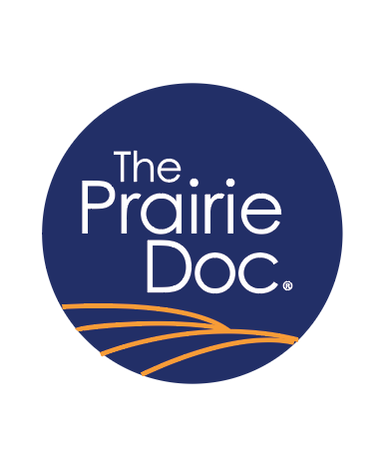Life LessonsPrairie Doc® Perspectives for week of July 26, 2020
By Debra Johnston, M.D. Sometimes, life has lessons for us that we don’t truly appreciate until much later. Many years ago, when I was a very wet behind the ears new doctor, I had the privilege of being part of the care team for an elderly Native American woman. She had been transferred from somewhere in rural South Dakota to our hospital in the city in hopes of identifying her disease and ascertaining how best to help her. Her daughter accompanied her. The medical team was convinced we knew “best,” while her daughter was determined that we were not going to take a single step that might conflict with her mother’s values. The stage was set for conflict. As an intern on one of my first rotations, I just could not understand why someone would come to us for help, and then not be willing to follow our recommendations for testing and procedures that we felt would give us information we needed. We were frustrated. I didn’t recognize it at the time, but I learned a lot from that fierce patient advocate. In retrospect, the most obvious lesson was the importance of acknowledging that people have different values, and those values are shaped by many things, including culture and religion. While it may be true that some values are shared across cultures, it is a mistake to assume that we can understand another person’s values and priorities through the prism of our own, or based upon what we think we know about them. Healthcare providers can best help their patients by taking time to discuss cultural values, sacred traditions, and priorities with patients. This is especially true when it comes to end of life care, but it also applies to situations such as acceptance of medical testing, preferences regarding prescription drugs versus non-pharmaceutical alternatives and culture-based healing practices. Another lesson was the importance of an advocate for the sick and vulnerable. It is extremely valuable for both the patient and the care team to have someone else present with the patient. This is a person the patient trusts to help clarify their concerns, to remember information, and to pass that information along to the patient’s loved ones. Prior to the covid-19 pandemic, few patients utilized an advocate, except in the gravest of circumstances. Now, procedures in place to protect patients, staff, and family from this dreadful virus, limit the opportunity for patients to have an advocate physically present. However, most facilities support connection to patient advocates via phone call or video call. In the end, a wise chaplain arranged for a traditional healer to visit our patient in her hospital room. I was not present for the ceremony, but the senior physicians and the daughter agreed on a plan of action. We didn’t cure the patient, but we were able to offer her physical comfort in her final days, and I believe that by blending her culture and traditions with our medical ethos, we helped both the patient and her daughter find spiritual comfort as well. Debra Johnston, MD is part of The Prairie Doc® team of physicians and currently practices family medicine in Brookings, South Dakota. For free and easy access to the entire Prairie Doc® library, visit www.prairiedoc.org and follow Prairie Doc® on Facebook featuring On Call with the Prairie Doc® a medical Q&A show streaming on Facebook and broadcast on SDPB most Thursdays at 7 p.m. central. Choosing Healthy HabitsBy Andrew Ellsworth, MD
Early on in the coronavirus pandemic with many people spending a lot of time at home, a wise friend told me that people will likely come out of this “a chunk, a hunk, or a drunk.” So, here we are four months later, and I have observed these outcomes in several of my patients. Some admit they have been drinking more, some say they have been snacking more, and thankfully, some have actually lost weight and have been eating healthier and exercising more. One man realized early on that he could not continue letting himself go. He started counting calories, lost 20 pounds, and is feeling great. He feels he has more energy to do the things he wants to do. He is not alone, and you can do it, too! This pandemic has disrupted our normal routines, which I believe makes this the perfect time to establish new habits. And, since we are forced to change our habits, we might as well choose healthy ones. Start with a little walk. Plan some time for a bike ride. Maybe you can borrow a used piece of home exercise equipment or dig out the old NordicTrack from the basement. If you need some motivation and could use a companion, make plans to work out with a friend or family member in person or on the phone. If you are ready for a long-term commitment, maybe get a dog and take it regularly for a walk. Now is also a great time to stop smoking. A new routine or being away from your regular workplace for an extended period allows you to avoid some of the triggers that make you want to smoke, such as your usual “smoke break time,” your favorite locations to smoke, and perhaps the people with whom you smoke. Certainly, times are tougher and none of this is easy, but please do not make it harder for yourself by becoming addicted to a substance. That will not solve your problems and will only make them worse. If you feel like you should cut down on your drinking, if you feel annoyed by people criticizing your drinking, if you feel guilty about your drinking, or if you find you need a drink in the morning, then it is probably time to cut down on your drinking. If cutting down is difficult, then please ask for help. Consider contacting someone from Alcoholics Anonymous, your primary care provider, a friend or family member, or do an internet search for help in your area. Whatever you decide to do to make yourself healthier, now is the best time to start. Start small, do it regularly, and soon you will have some new habits, a healthier you, and a little silver lining from these unusual times. Andrew Ellsworth, MD is part of The Prairie Doc® team of physicians and currently practices family medicine in Brookings, South Dakota. For free and easy access to the entire Prairie Doc® library, visit www.prairiedoc.org and follow Prairie Doc® on Facebook featuring On Call with the Prairie Doc® a medical Q&A show streaming on Facebook and broadcast on SDPB most Thursdays at 7 p.m. central. Radiology…It’s Not Always Black and WhiteBy Jennifer May, M.D.
“Doctor, I need an x-ray.” As a rheumatologist, I hear this statement many times from patients who believe imaging will help determine the cause of symptoms, such as back pain or knee pain. It seems simple, take a picture, and find out what is wrong. However, radiology is not always black and white. Radiology is the medical specialty that uses medical imaging to diagnose and treat disease. Radiologists are physicians, trained in interpreting various types of imaging such as x-rays, CT scans, MRIs and more. Rheumatologists often depend on imaging to help manage diseases such as rheumatoid arthritis. However, the rheumatologist, radiologist, and patient must work as a team to determine which type of radiology will be most effective for each specific clinical situation. For example, an x-ray of a patient with knee pain tells us about the bones, cartilage (space between the joint), and degree of joint fluid present. But it tells us little directly about tendons, ligaments, or muscles because these soft tissues do not show up on a basic x-ray. Therefore, an x-ray may not be the most informative option and performing one may not change the treatment plan. Radiology offers a wide range of tools for physicians and patients today. What began with x-rays has evolved into a broad field that includes both interpretation and intervention. Interventional radiologists perform various minimally invasive procedures using medical imaging guidance, such as x-ray or ultrasound. Interventional radiology can treat problems with blood vessels such as blockages or clots and place stents to open them up. They can insert medicine directly into tumors, perform biopsies and other procedures. Additionally, patients generally tolerate interventional radiology procedures much better than major surgery. With this in mind, when a patient presents their specific set of symptoms, I consider the wide spectrum of radiological tools and talk to the patient about which are most likely to help us find the information we need to improve their particular situation. Sometimes the right tool is an x-ray, but other times it is not. Once the information is gathered, physicians and radiologists work together to interpret the data and make a diagnosis. At that point, we are better prepared to make treatment decisions and determine if the patient needs medicine, injections, a brace, physical therapy, or referral to specialist. Without a doubt, radiology is integral to good medicine, but it’s not always black and white. Jennifer May, M.D. is a contributing Prairie Doc® columnist. She practices rheumatology in Rapid City, South Dakota and serves on the Healing Words Foundation Board of Directors, a 501c3 which provides funding for Prairie Doc® programs. For free and easy access to the entire Prairie Doc® library, visit www.prairiedoc.org and follow Prairie Doc® on Facebook featuring On Call with the Prairie Doc® a medical Q&A show streaming on Facebook and broadcast on SDPB most Thursdays at 7 p.m. central. As Plain as the Nose on your FaceBy Andrew Ellsworth, MD
My friend broke my nose at an after-prom party in high school. It was nothing deliberate, such as fighting over a girl. Rather, we bumped heads while wearing those big round air-filled sumo wrestler suits. Besides hurting a lot, I remember thinking, “I’ve never been so aware of my nose before.” I was overly cautious of anything that could come close to my nose. I think we sometimes take our noses for granted. Despite being right between our eyes, it’s not our noses, but our heart, lungs, and other organs that get most of our interest. We brush our teeth daily. We get our eyes checked regularly. We adorn our ears and fingers with rings all the time, but the nose is generally ignored. Sure, there are some famous noses and some people are more aware of the size of their nose than others, but mostly, outside an occasional bloody or runny nose, we don’t pay it much attention. During annual preventive physical exams, I usually look around for any suspicious spots that could be cancer. One of the most common areas is on the nose. The nose sticks out and is susceptible to getting more sunlight and thus can be prone to getting skin cancer. If you notice a new bump on your nose that won’t go away after a month or two, you should get it checked out. Better yet, be proactive and put sunscreen on your nose as well as your ears, cheeks, neck, arms, and legs and anywhere else that will be in the sun. It’s best to keep your nose out of it (the sun, that is) and wear a wide-brimmed hat. Of course, we cannot talk about our noses without expressing appreciation for our precious sense of smell. Smell helps our brains taste all those amazing flavors and when food goes bad, we depend on our nose to warn us before we take a bite of something that we want to thumb our nose at. I can’t imagine going through summer without the smell of flowers, apple pie, a campfire and fireworks. With Covid-19 around, the smell of peanuts at a crowded baseball game or cotton candy at the fair will have to wait for now, I guess. If you lose your sense of smell talk to your doctor. It could be from allergies or a cold, but it could also be something more serious like the coronavirus. As much as we’d like to see everyone’s nose again, the right thing to do is as plain as the nose on our face. Let’s not get our noses out of joint. Let’s keep our noses to the grindstone, continue to be mindful of social distancing and wear masks that cover our mouths and our noses! Andrew Ellsworth, MD is part of The Prairie Doc® team of physicians and currently practices family medicine in Brookings, South Dakota. For free and easy access to the entire Prairie Doc® library, visit www.prairiedoc.org and follow Prairie Doc® on Facebook featuring On Call with the Prairie Doc® a medical Q&A show streaming on Facebook and broadcast on SDPB most Thursdays at 7 p.m. central. |
Archives
July 2024
Categories |
 RSS Feed
RSS Feed


